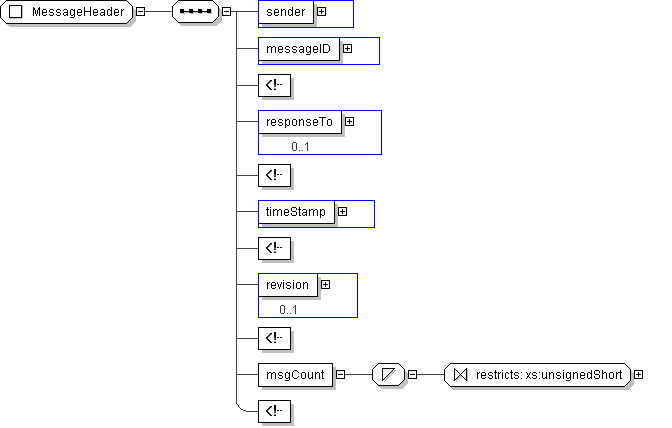Diagram

| Super-types: | None |
|---|---|
| Sub-types: | None |
| Name | MessageHeader |
|---|---|
| Used by (from the same schema document) | Complex Type AdvisoryInformation , Complex Type DirectoryAdvancedRequest , Complex Type InformationRequest , Complex Type InformationResponse , Complex Type ParkingSpaceReply , Complex Type ParkingSpaceRequest , Complex Type RouteRequest , Complex Type TravelerSettingsReply , Complex Type TravelerSettingsRequest , Complex Type ParkingLotInformation |
| Abstract | no |
